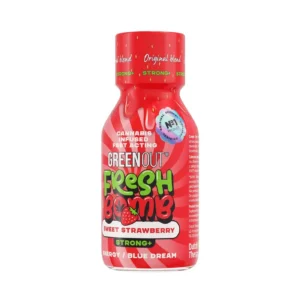How to Turn a Joint: A Complete Guide for Beginners and Advanced Users
Twisting a joint is not only a skill, but also an art. For many people, it is a way to enjoy the aromatic haze and intense flavor of the dried stuff. Twisting a joint on your own has many advantages: it allows you to choose the highest quality materials, adjust the strength to your personal preferences and save money.
Basic Materials and Tools:
Before you start bolting, make sure you have all the necessary materials on hand:
- Dried plants (hemp, tobacco, etc.) - choose the ones that best suit your taste and aroma expectations.
- Twist papers - available in different sizes and colors; you can choose the ones that suit you best.
- Twisting machine (optional) - makes it easier to fill the blotting paper with dryer.
- Crusher or grinder (optional) - helps to get the right consistency of the dried product.
Step by Step: How to Turn a Joint?
Selection and Preparation of Materials:
- Choose your favorite droughts.
- If you need to, use a shredder or grinder to properly grind the material.
Wetting Blotter:
- Uncover the tissue paper on the table and moisten it with water, starting from the center and moving toward the edges. Moist tissue paper will hold the dryer better.
Filling the Blotter with Dries:
- Using your fingers or a razor, fill the center of the blotting paper with the dryer, trying to form an even layer.
Joint Formation:
- Gently roll the sides of the tissue paper toward the center to form a compact structure.
Assembling the Joint:
- Using your fingers or a razor, roll the end of the tissue paper upward, forming a characteristic "cone" at one end of the joint.
Arson and Inhalation:
- Use matches or a lighter to light the free end of the joint. Remember to take deep, controlled breaths.
Additional Tips and Tricks:
- How to choose the best tissue paper for twisting?
- Choose ones that are thick and durable enough, and ones that match your favorite flavors.
- How to get better taste and aroma?
- Experiment with different types of dried food and adding spices or essential oils.
- How do you successfully set a joint on fire?
- Make sure that the tip is well rolled and the fire touches the dried food along the entire length of the joint.
Twisting your own joints is a skill that allows you to fully experience the pleasure of smoking. Over time, it becomes a routine and a way to express creativity in your choice of dry and additives. Remember, the most important thing is patience and practice, and the satisfaction of a well-turned joint is incomparable.
I invite you to continue learning and experimenting with different twisting techniques!
Frequently Asked Questions (FAQs):
Is twisting a joint difficult?
Turning may seem difficult at first, but over time it becomes routine. Practice and patience are the keys to success.
How long can joints be stored?
Joints are best smoked as soon as they are rolled, but if you must store them, do so in a dry and cool place so that they do not lose their quality.
What are the advantages of rolling your own joints?
Self-twisting allows you to customize the amount of dried food and its type according to your preferences, as well as save money.
FAQ: How to twist a joint?
🔍 Searching for information on joint twisting techniques can be fascinating, and the following FAQ aims to address the most common doubts and encourage exploration of this world.
What materials are needed to twist a joint?
To create the perfect joint, you will need a few basic things:
- Cannabis or tobacco seed (you can choose from a wide range available on the market)
- Twist papers (available in different sizes and colors)
- Crusher or grinder (optional to get a finer dried product)
- Joint twisting machine (optional, for advanced users)
What are the basic steps to twist a joint?
Twisting a joint is not difficult and can be an enjoyable craft:
- Prepare dried hemp or tobacco by grinding it into smaller pieces with a shredder or grinder.
- Take a tissue paper for twisting and place it vertically in front of you.
- Arrange the dryer on one end of the tissue paper, trying to spread it evenly along its length.
- Fold the tissue paper so that the dryer is inside and the ends of the tissue paper are outside.
- Tilt the blotter and use your tongue or fingers to moisten one end, which will help keep the dryer inside while you twist it.
- Start twisting the tissue paper from the top down, trying to get an even and compact joint.
- When you have reached the end, hold one end of the tissue paper between your fingers and wrap the other end around it a few times to secure the joint.
- Run your fingernail over the edge of the twisted joint to remove excess dryness and fix its shape.
What are the most common mistakes when twisting a joint?
Beginners can make some common mistakes:
- Too little dryness at the end, which can lead to rapid burning of the joint
- Twisting too tightly, which makes it difficult to smoke and can cause the joint to fall apart while smoking
- Lack of adequate moisture, leading to unsealed joint and difficulty in smoking it
How long can a twisted joint be stored?
Depending on the quality of the dried product and storage conditions, the joint can be stored for several weeks to a month:
- Store in a cool, dark place to avoid loss of aroma and flavor
- Seal tightly in a plastic container or aluminum foil to prevent the dried food from drying out
In conclusion, twisting a joint is an art that can be very rewarding. Experiment with different techniques and additives to find the perfect flavor and texture for you. Remember to be patient and practice, and each successive joint will be better than the last!








